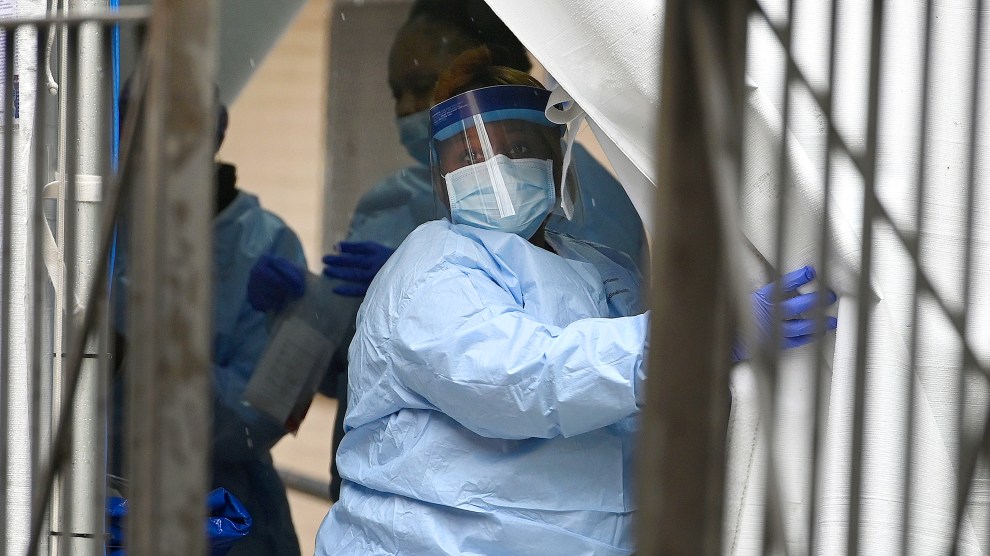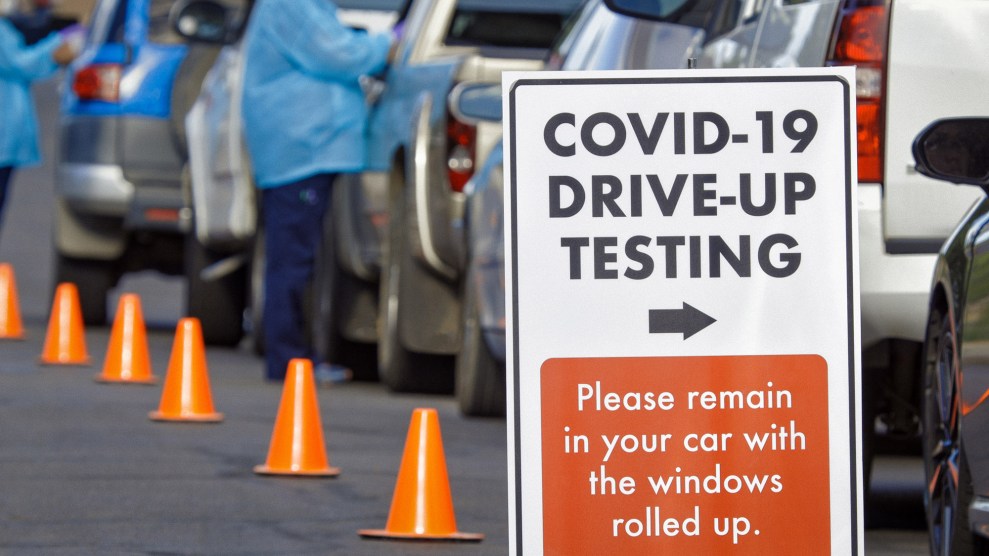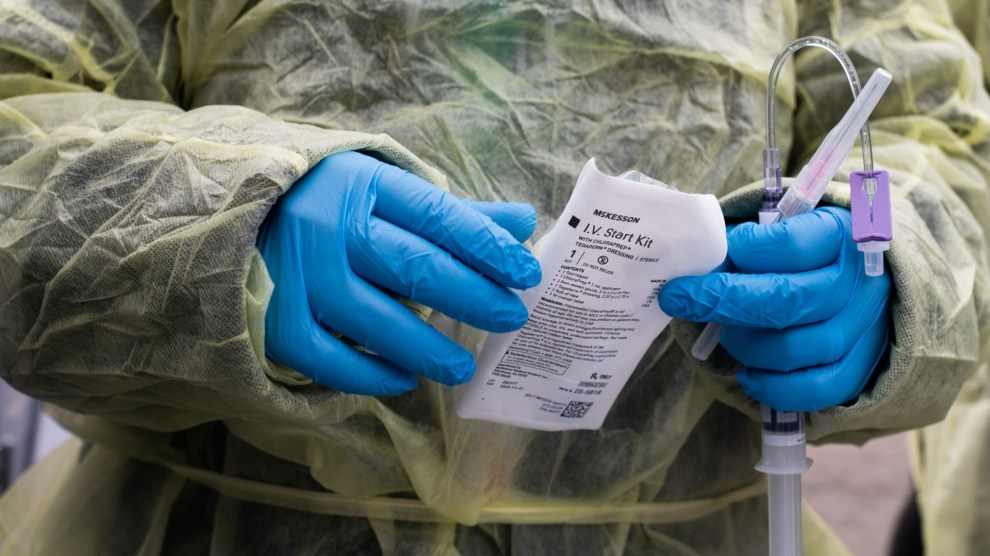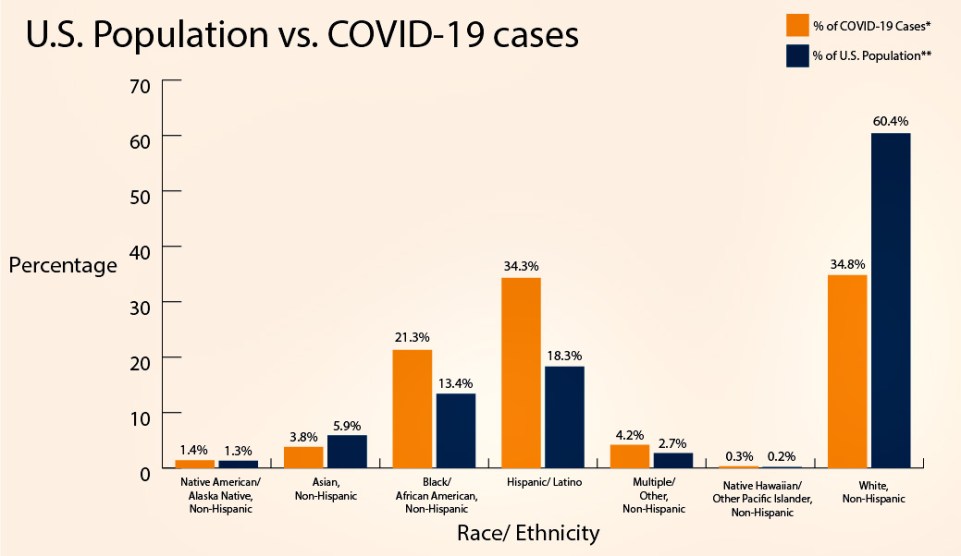
A file photo showing a healthcare worker at a hospital in Harlem, New York City.Anthony Behar/Sipa via AP
With the Omicron surge finally cresting in the U.S., new data has begun to emerge showing the scale of the damage it caused—and the different populations it hit the hardest, especially among historically marginalized Americans.
On March 18, the CDC released a new Morbidity and Mortality Weekly Report, which found that the racial disparities that have manifested throughout the pandemic persisted through its most recent wave. According to the data, hospitalization rates among non-Hispanic Black adults during Omicron’s peak was nearly four times as high as rates among white adults. To arrive at its conclusions, CDC investigators gathered and analyzed data on a representative sample of adult patients, constituting about 8 percent of those hospitalized from July 1, 2021 to January 31, 2022.
Racial disparities in hospitalizations and deaths have cropped up in virtually every stage of the pandemic. From 2019 to 2020, life expectancy among Black and Latino Americans dropped by three years. While no single factor can account for these differences, experts have speculated that the gap stems from a disproportionate lack of access to healthcare among Americans of color, racism in the medical system, and increased rates of vaccine hesitancy.
The report also found that booster shots played a much more significant role in keeping down hospitalization rates than was initially expected. The rate among adults who received boosters was three times times lower than the rate among unboosted adults and 12 times lower than unvaccinated adults. Counties and public health experts have condemned the federal government for muddled messaging on boosters during the start of the Omicron wave, which forced many Americans attempting to determine their third-dose eligibility to sort through a whirlwind of contradictory rulings.

















